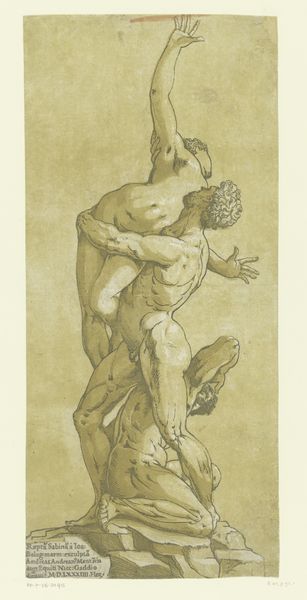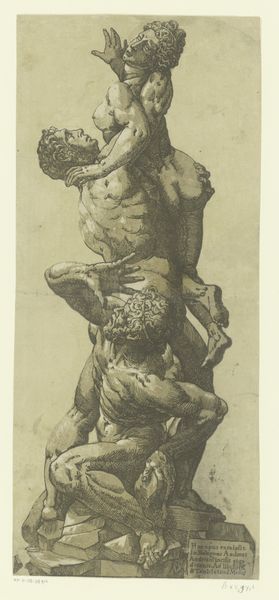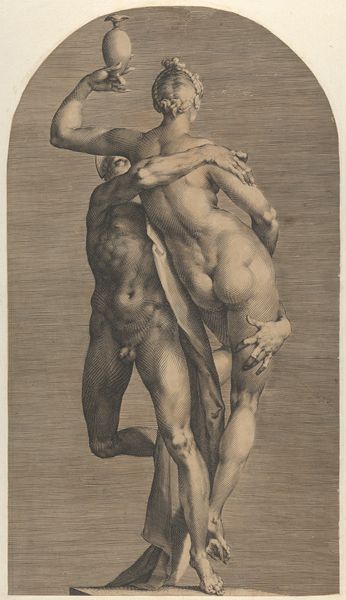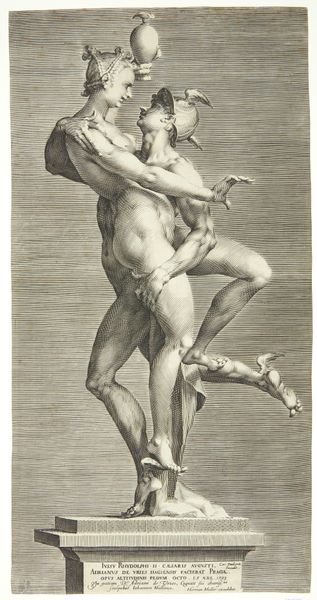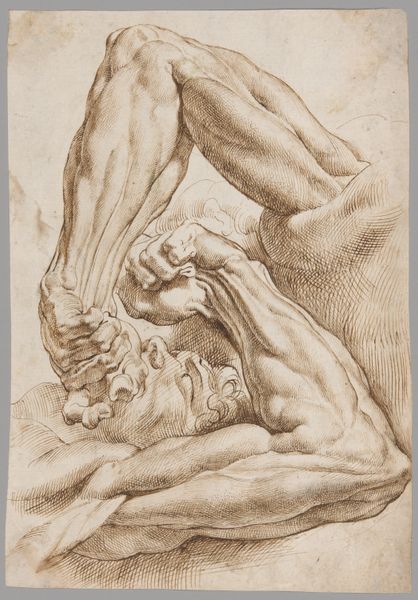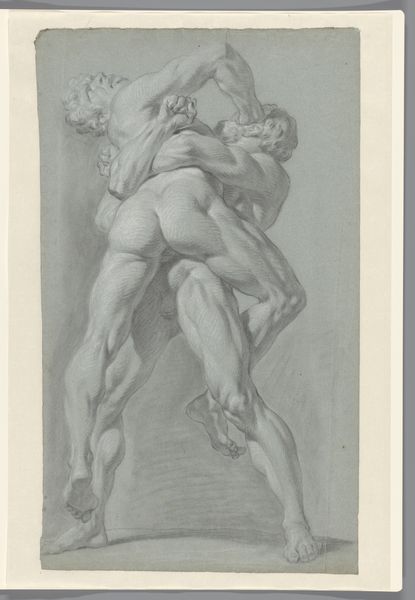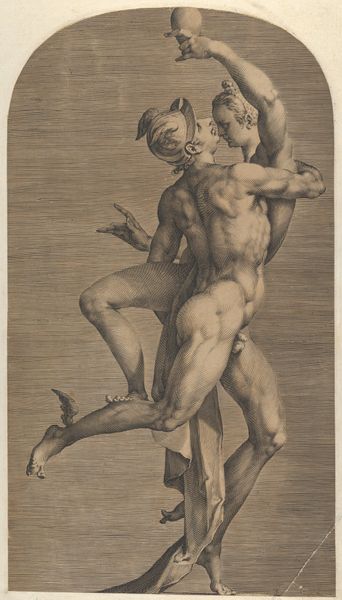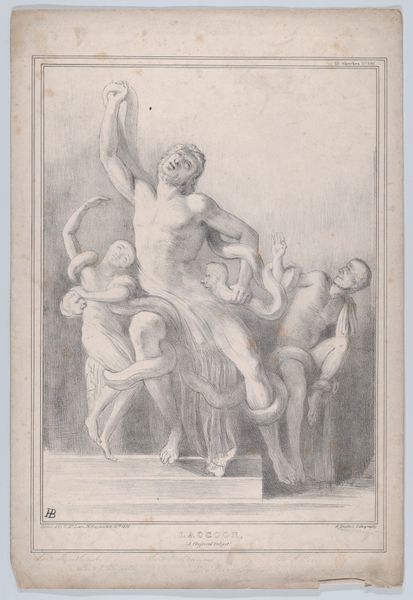
drawing, print, engraving
#
drawing
# print
#
mannerism
#
figuration
#
form
#
line
#
sketchbook drawing
#
history-painting
#
nude
#
engraving
Dimensions: height 452 mm, width 212 mm
Copyright: Rijks Museum: Open Domain
Curator: Look at the dynamic tension in this image! It's Andrea Andreani’s print, “The Abduction of the Sabine Women,” created around 1584. The original drawing is what the Rijksmuseum holds, but what's fascinating to me is how the printmaking process influences the lines themselves. Editor: It’s a bit unsettling, isn't it? The upward thrust of the figures is dramatic, yet there’s a disturbing lack of emotion in their faces given the circumstances depicted. It feels cold. Curator: I agree there is a detachment but notice how the figures intertwine—each body supporting and relying on the others for structural integrity? The line work here, especially given that it is a print derived from a drawing, is remarkable. How Andreani used the tools available in printmaking, most likely a chiaroscuro woodcut, to give volume is remarkable! Editor: Absolutely. That intertwining visually represents the forced merging of two communities, highlighting the politics inherent in such events. What's interesting, of course, is that the event itself becomes part of the artistic and political dialogue about early Roman history, reinforcing certain power structures. Curator: Yes, the material production of this image contributes to the construction and maintenance of those historical narratives. Printmaking, after all, allows for mass distribution, shaping public opinion, creating what would be collective memory via circulated images! Editor: It also raises questions about the artist's intentions, doesn't it? Were they celebrating Roman strength or critiquing violence against women? Or, were they just selling an epic tale? This print's context tells us much about cultural values then, particularly around the roles of men and women. Curator: We’re both noticing that interplay. I can't help but imagine Andreani in his workshop meticulously carving, inking, printing these scenes, crafting this object, repeating and perfecting for this narrative impact. The hand involved in art creation adds layers of importance to its effect. Editor: It makes you think about art's capacity to act as social commentary as much as it does for it acting as visual record! So many factors at play. Curator: Yes, reflecting on this print from its materiality, production, all the way to the broader story, has revealed a potent entanglement between the hand of the artist and its ripple across culture. Editor: Agreed, I'll consider how context shapes an audience’s perspective and reinforces cultural ideology within artistic expression and narrative even with old prints like this one!
Comments
No comments
Be the first to comment and join the conversation on the ultimate creative platform.
